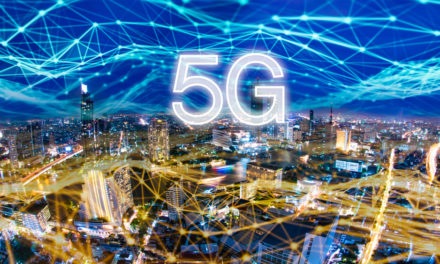Investor Insights:
- There will be 64 billion devices connected to the internet by 2025.
- This parabolic explosion of data will be met with new, faster 5G networks.
- The Hypernet is one solution to the rapidly growing expansion of information.
One of the more frustrating problems in the modern world happens when there’s no internet access.
We’ve all experienced this vexing situation…
Perhaps you were following Google Maps to get to an urgent business meeting, and the internet signal no longer worked.
Or you were trying to price-check an item in Walmart to see if it was cheaper on Amazon.
Or you were having a Skype or FaceTime conversation with distant loved ones and their faces froze.
My recent lack-of-internet incident occurred while boarding a cross-country red-eye flight last weekend.
I was glued to my mobile phone, streaming my beloved New York Yankees as they battled the Houston Astros in the American League Championship Series.
The Yankees had just hit a two-run home run to tie the game in the top of the ninth, potentially sending the game into extra innings.
But my celebration was abruptly ended when the flight crew asked for all connected electronic devices to be shut off. The plane was about to taxi onto the runway.
To make matters worse, the flight’s internet didn’t work — so there was no way to find out how the game ended.
It wasn’t until we landed in Miami, Florida, five hours later that I heard the Yankees lost the game in the bottom of the ninth. (Maybe I was better off not knowing.)
Obviously, this was a trivial matter. But with so many Internet of Things (IoT) devices nowadays, it’s imperative that the internet always works.
That’s why I want to share a brand-new technology with you today. It’s an incredible innovation that’s so fast and reliable, it’ll make the internet obsolete.
Our Parabolic Explosion of Data
Research firm Gartner predicts that by next year, there will be 20.4 billion devices connected to the internet. This number is expected to more than triple to 64 billion devices by 2025.
With billions of new devices connecting to the internet, the amount of data that gets sent over the current internet pathways will swell, as everything from cars to robot vacuums — even refrigerators — becomes internet-enabled.
This parabolic explosion of data will be met with new, faster 5G networks that create a superhighway for the data to travel.
However, even superhighways eventually suffer traffic jams. When this happens, new roads are built to keep traffic moving at the same pace.
For data, new pathways will be necessary to keep up with the rapidly growing expansion of information.
And one of these solutions is to transmit data via lightwaves, using LED bulbs.
The light flickers and emits Morse code-like messages that can be picked up by connected devices.
In research labs, this technology is called “IoT lighting” or “Li-Fi.” But we call it the Hypernet.
Get Ready for the Hypernet
The mobile phone industry has already anticipated this new way to transmit data.
Since 2014, Apple’s iPhone software has had code capable of picking up light signals. Android has had it for many years as well.
Perhaps during future flights, I’ll be able to finish watching my baseball game with help from the overhead reading light, thanks to the Hypernet.
In a new video, I explain this new way of transmitting data. You can watch it by clicking on the video below:
Regards,

Editor, Automatic Fortunes
P.S. The 5G revolution is creating tons of amazing new opportunities for investors. I’ll talk about some of them in the Saturday Market Insights video. Make sure you check your email inbox Saturday morning to hear about the latest developments for this exciting new technology.









